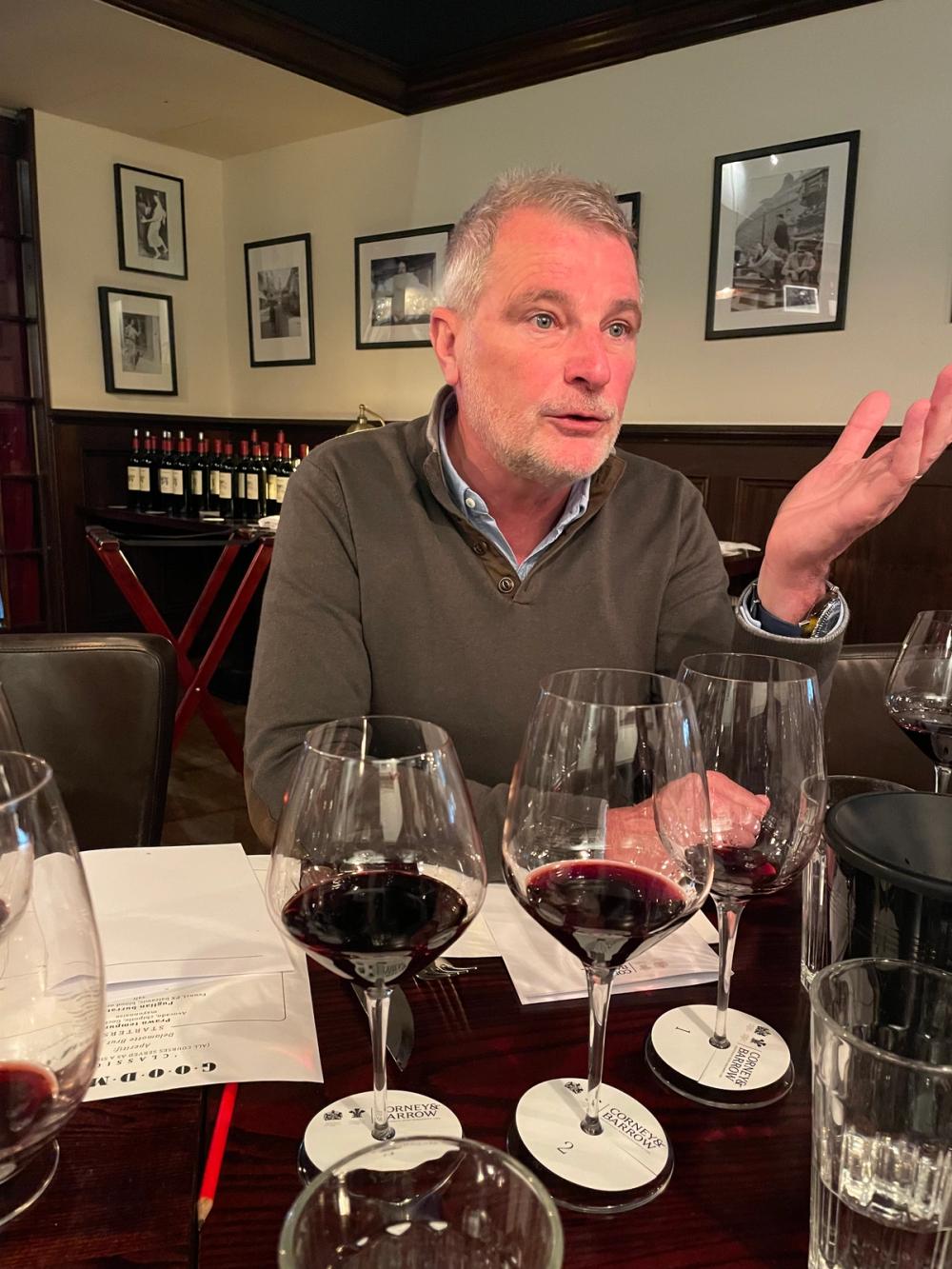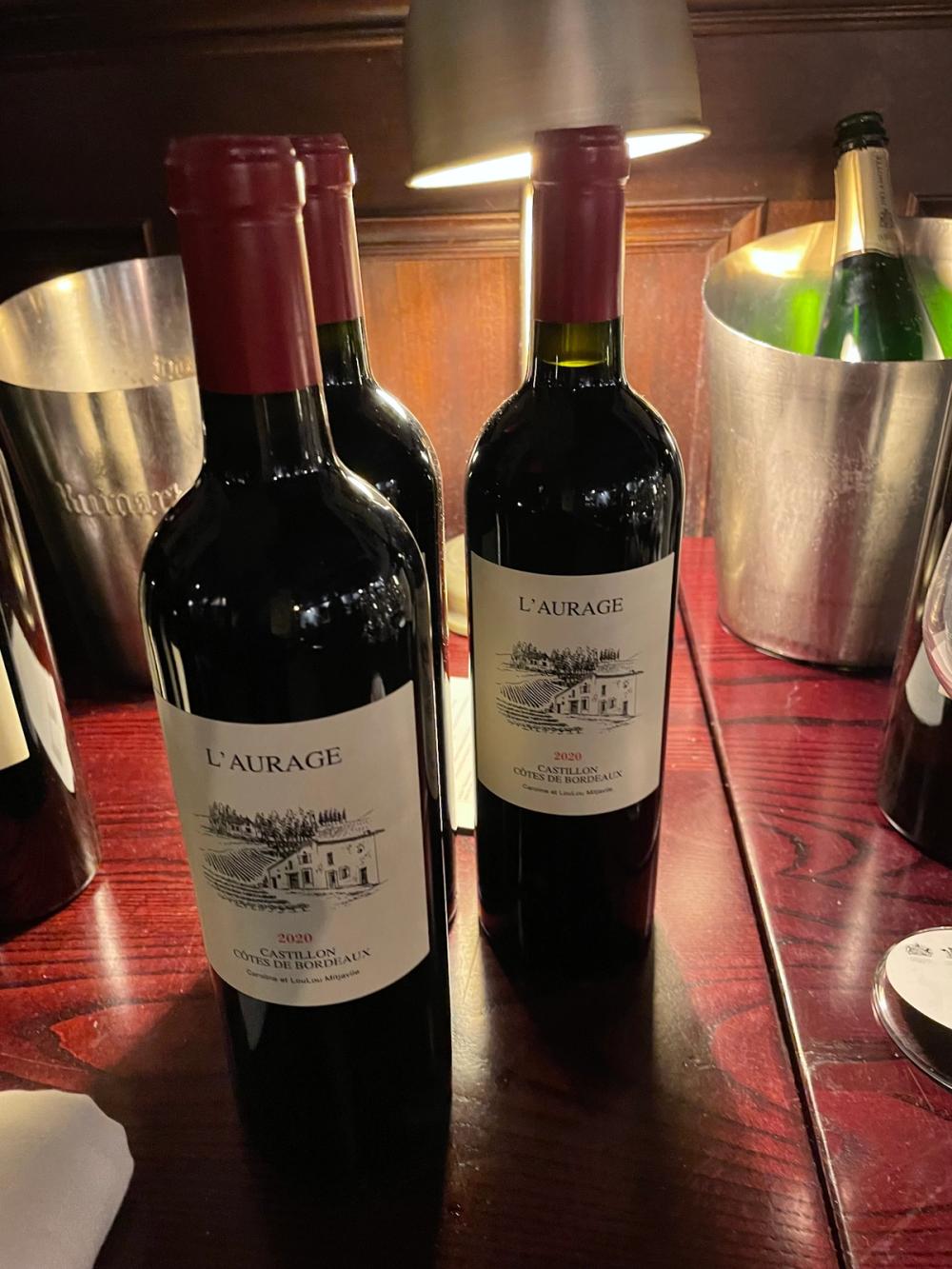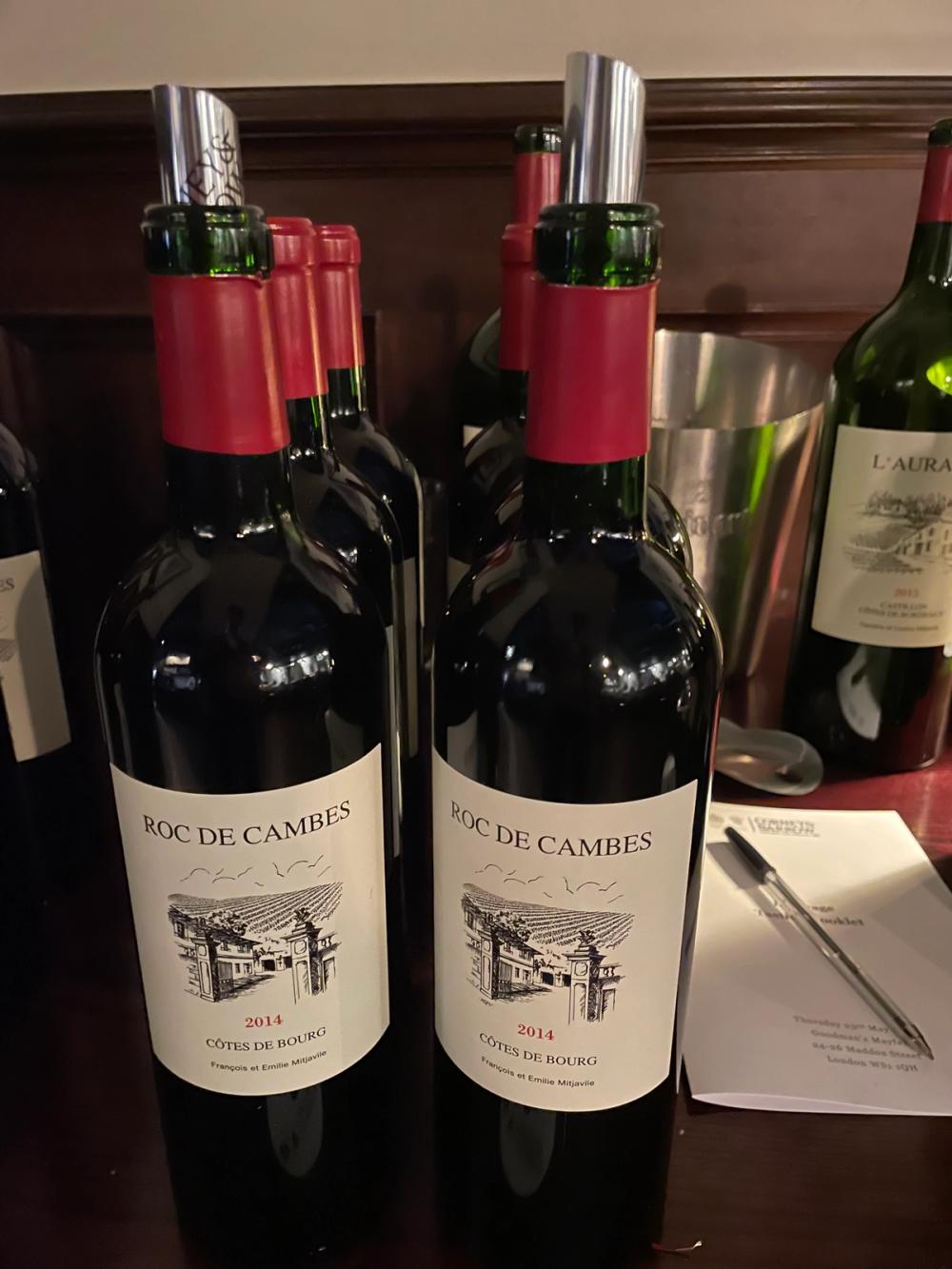Sometimes delight is to be found in the delicate and exotic, sometimes in the down-to-earth. The tasting of Domaine de l’Aurage’s wine at the Mayfair branch of steakhouse Goodman is clearly the latter. The food sets the tone. No violet artichoke, no apple ketchup here. Instead, steak tartare and hefty grass-fed heritage-breed steaks with hand-cut chips. Not fare for the feint-hearted or vegan, certainly. Our host, Louis Mitjavile, is similarly straightforward.

Castillon - Côtes de Bordeaux: still affordable
So what’s the story?
Domaine de l’Aurage is a relative newcomer to the Bordeaux scene, only releasing its first vintage in 2009 having been created by Louis and his wife Caroline. Louis’s father, Francois, is the charismatic owner of the singular-styled and much lauded Tertre-Roteboeuf in the Saint Émilion Grand Cru appellation.
Louis explains candidly to me that buying land in a similarly fancy appellation was simply out of the question: instead, they bought where they could afford, in what was then the unglamorous Castillon - Côtes de Bordeaux where a hectare can still be snapped up for €25,000 a hectare.
Still, L’Aurage was suited to Merlot and its limestone and clay soils are reminiscent of St-Émilion, whose border is just a stone's throw away.

"The goal is not to show off how big your muscles are." - Louis Mitjavile
Where the terroirs differ, though, is in climate with Castillon cooler, making for a later harvest. Mitjavile’s pragmatic approach has clearly paid off, though, as Castillon’s wines have gained wide recognition in the last decade and show every sign of improving vintage by vintage. They also remain a bit of a bargain.
L’Aurage’s vines are 95% Merlot and 5% Cabernet Franc, although the percentage of Cabernet Franc is diminishing, as the new re-plantings are now all Merlot. The oldest vines are 17 years old.
The estate’s wines are high in alcohol, at 15% abv or above, but Mitjavile is not unduly worried. “Alcohol gives grace, and roundness and richness,” he insists. He also explains that he is not interested in concentration but opulence, balance and harmony. “The goal is not to show off how big your muscles are. There should be no surprises,” he quips.

So how are the wines tasting?
The starter arrives - sharing plates of steak tartare topped with an egg, prawn tempura and burrata. This is served with magnums of the L’Aurage Castillon Côtes de Bordeaux 2015 (15.5% abv). Nine years old, this is still fresh. Opulent and weighty in style the new oak is completely integrated. It’s a wine people will understand immediately, although it probably needs consuming within a couple of years.
Second is the L’Aurage Castillon Côtes de Bordeaux 2018 (15% abv, £36 a bottle retail). This has a marked, exuberant, late-picked style with liquorice, plums, and cocoa. Elegant, silky and fresh, the finish also displays ripe berries.
And then the L’Aurage Castillon Côtes de Bordeaux 2020 (15% abv, £36 retail). This impressed en primeur as powerful and concentrated. This vintage was harvested on 12 October, making it one of the estate’s latest harvests. Again, it is quite exuberant and has fine tannins.
Interestingly, L’Aurage is not certified organic. One suspects that Mitjavile thinks he can achieve much the same outcome without the ‘faff’ and without trumpeting that the estate has green credentials. He displays a beguiling mix of pride and modesty in his winemaking. His wines are reliable, approachable and, ultimately, speak for themselves.

We finish with wines from Roc de Cambes Côtes de Bourg, first the 2014 (13.5% abv, POA) and then the 2017 (14% ABV, £96 retail). Roc de Cambes is owned by Francois Mitjavile (Tertre Roteboeuf), but is more affordable. The vines have an average age of 45 years and the grape mix here is 75% Merlot, 20% Cabernet Sauvignon plus 5% Malbec.
Intensity, ripeness and refinement are the watchwords here but with a bottle costing close to three figures, value for money isn’t uppermost as it is with the offerings of L’Aurage.
L’Aurage and Roc de Cambes are distributed in the UK by Corney & Barrow, which is a commercial partner of The Buyer. To discover more about them click here.
































